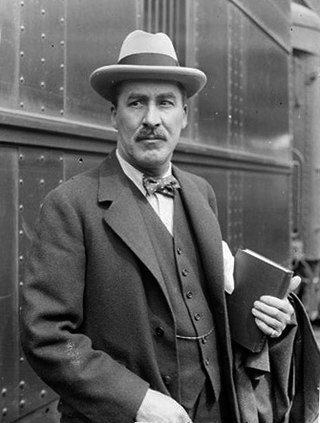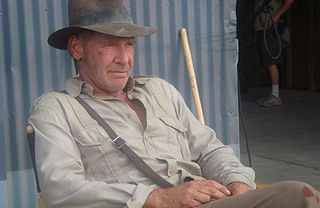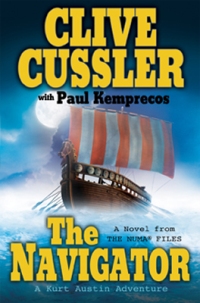
The British Museum is a public museum dedicated to human history, art and culture located in the Bloomsbury area of London. Its permanent collection of eight million works is the largest in the world. It documents the story of human culture from its beginnings to the present. Established in 1753, the British Museum was the first public national museum to cover all fields of knowledge.

Howard Carter was a British archaeologist and Egyptologist who discovered the intact tomb of the 18th Dynasty Pharaoh Tutankhamun in November 1922, the best-preserved pharaonic tomb ever found in the Valley of the Kings.

Dr. Henry Walton "Indiana" Jones Jr. is the title character and protagonist of the Indiana Jones franchise. George Lucas created the character in homage to the action heroes of 1930s film serials. The character first appeared in the 1981 film Raiders of the Lost Ark, to be followed by Indiana Jones and the Temple of Doom in 1984, Indiana Jones and the Last Crusade in 1989, The Young Indiana Jones Chronicles from 1992 to 1996, Indiana Jones and the Kingdom of the Crystal Skull in 2008, and Indiana Jones and the Dial of Destiny in 2023. The character is also featured in novels, comics, video games, and other media. Jones is also the inspiration for several Disney theme park attractions, including Indiana Jones and the Temple of Peril, the Indiana Jones Adventure, and Epic Stunt Spectacular! attractions.

Tutankhamun or Tutankhamen, was an ancient Egyptian pharaoh who ruled c. 1332 – 1323 BC during the late Eighteenth Dynasty of ancient Egypt. Born Tutankhaten, he was likely a son of Akhenaten, thought to be the KV55 mummy. His mother was identified through DNA testing as The Younger Lady buried in KV35; she was a full sister of her husband.

Manna, sometimes or archaically spelled mana, is described in the Bible and the Quran as an edible substance that God bestowed upon the Israelites while they were wandering the desert during the 40-year period that followed the Exodus and preceded the conquest of Canaan.

The Museum of Egyptian Antiquities, commonly known as the Egyptian Museum, located in Cairo, Egypt, houses the largest collection of Egyptian antiquities in the world. It houses over 120,000 items, with a representative amount on display. Located in Tahrir Square in a building built in 1901, it is the largest museum in Africa. Among its masterpieces are Pharaoh Tutankhamun's treasure, including its iconic gold burial mask, widely considered one of the best-known works of art in the world and a prominent symbol of ancient Egypt.

In Greek mythology, Perseus is the legendary founder of the Perseid dynasty. He was, alongside Cadmus and Bellerophon, the greatest Greek hero and slayer of monsters before the days of Heracles. He beheaded the Gorgon Medusa for Polydectes and saved Andromeda from the sea monster Cetus. He was the son of Zeus and the mortal Danaë, as well as the half-brother and great-grandfather of Heracles.

The Queen of Sheba, known as Bilqis in Yemeni and Islamic tradition and as Makeda in Ethiopian tradition, is a figure first mentioned in the Hebrew Bible. In the original story, she brings a caravan of valuable gifts for the Israelite King Solomon. This account has undergone extensive Jewish, Islamic, Yemenite and Ethiopian elaborations, and it has become the subject of one of the most widespread and fertile cycles of legends in Asia and Africa.

Wilbur Addison Smith was a Northern Rhodesian-born British-South African novelist specializing in historical fiction about international involvement in Southern Africa across four centuries.

The Copper Scroll (3Q15) is one of the Dead Sea Scrolls found in Cave 3 near Khirbet Qumran, but differs significantly from the others. Whereas the other scrolls are written on parchment or papyrus, this scroll is written on metal: copper mixed with about 1 percent tin, although no metallic copper remained in the strips; the action of the centuries had been to convert the metal into brittle oxide. The so-called 'scrolls' of copper were, in reality, two separated sections of what was originally a single scroll about 2.4 metres (7.9 ft) in length. Unlike the others, it is not a literary work, but a list of 64 places where various items of gold and silver were buried or hidden. It differs from the other scrolls in its Hebrew, its orthography, palaeography and date.

The Virgin Spring is a 1960 Swedish film directed by Ingmar Bergman. Set in medieval Sweden, it is a tale about a father's merciless response to the rape and murder of his young daughter. The story was adapted by screenwriter Ulla Isaksson from a 13th-century Swedish ballad, "Töres döttrar i Wänge". Bergman researched the legend of Per Töre with an eye to an adaptation, considering an opera before deciding on a film version. Given criticism of the historical accuracy of his 1957 film The Seventh Seal, he also invited Isaksson to write the screenplay. Other influences included the 1950 Japanese film Rashomon. Max von Sydow played Töre.

A Chinese treasure ship is a type of large wooden Chinese junk in the fleet of admiral Zheng He, who led seven voyages during the early 15th-century Ming dynasty. The size of the treasure ships, the largest ships in Zheng He's fleet, has been a subject of much controversy, with some old Chinese records mentioning the size of 44 zhang or 44.4 zhang, which has been interpreted by some modern scholars as over 100 m (330 ft) in length, while others have stated that Zheng He's largest ship was around 70 m (230 ft) or less.
The Jesus bloodline refers to the proposition that a lineal sequence of the historical Jesus has persisted, possibly to the present time. Although absent from the Gospels or historical records, the concept of Jesus having descendants has gained a presence in the public imagination, as seen with Dan Brown's 2003 best-selling novel The Da Vinci Code and its 2006 movie adaptation of the same name that used the premise for its plot. It is dismissed generally by scholars. These claimed Jesus' bloodlines are distinct from the biblical genealogy of Jesus, which concerns the alleged ancestors of Jesus, and from the documented Brothers of Jesus and other kin of Jesus, known as the Desposyni.

Joseph's Tomb is a funerary monument located in Balata village at the eastern entrance to the valley that separates Mounts Gerizim and Ebal, 300 metres northwest of Jacob's Well, on the outskirts of the West Bank city of Nablus. It has been venerated throughout the ages by Samaritans, for whom it is the second holiest site; by Jews; by Christians; and by Muslims, some of whom view it as the location of a local sheikh, Yusef al-Dwaik or Dawiqat, who died in the 18th century.

The Navigator is the seventh book in the NUMA Files series of books co-written by best-selling author Clive Cussler and Paul Kemprecos, and was published in June 2007. The main character of this series is Kurt Austin.

Thank You, Mr. Moto is a 1937 American mystery film directed by Norman Foster. It is the second in a series of eight films starring Peter Lorre as Mr. Moto. It was based on the novel of the same name by the detective's creator, John P. Marquand. Mr. Moto battles murderous treasure hunters for priceless ancient scrolls which reveal the location of the long-lost tomb of Genghis Khan.

River God is a novel by author Wilbur Smith. It tells the story of the talented eunuch slave named Taita, his life in Egypt, the flight of Taita along with the Egyptian populace from the Hyksos invasion, and their eventual return. The novel can be grouped together with Wilbur Smith's other books on Ancient Egypt. It was first published in 1993, and was adapted for television alongside The Seventh Scroll as the 1999 mini-series The Seventh Scroll.
The Courtney Novels are a series of twenty four novels published between 1964 and 2024 by Wilbur Smith. They chronicle the lives of the Courtney family, from the 1660s through until 1987.

Die Nibelungen is a 1966/1967 West German fantasy film released in two parts, Siegfried von Xanten and Kriemhilds Rache. It was directed by Harald Reinl and produced by Artur Brauner. Die Nibelungen starred Uwe Beyer, Karin Dor and Herbert Lom. The two films were a remake of Fritz Lang's 1924 silent classic Die Nibelungen, which was in turn based on the epic poem the Nibelungenlied.

Mummies are commonly featured in horror genres as undead creatures wrapped in bandages. Similar undead include skeletons and zombies.


















